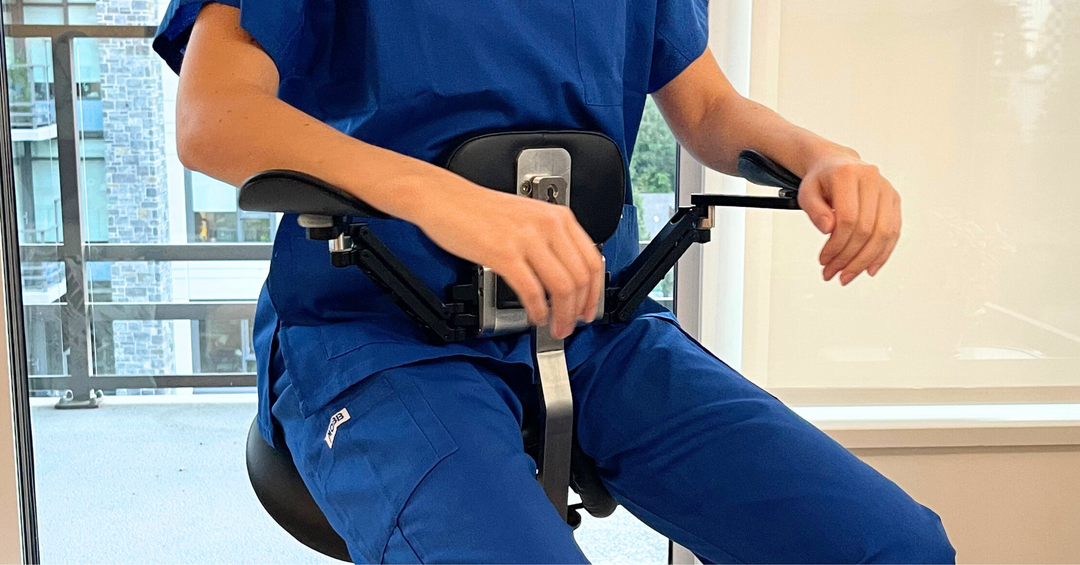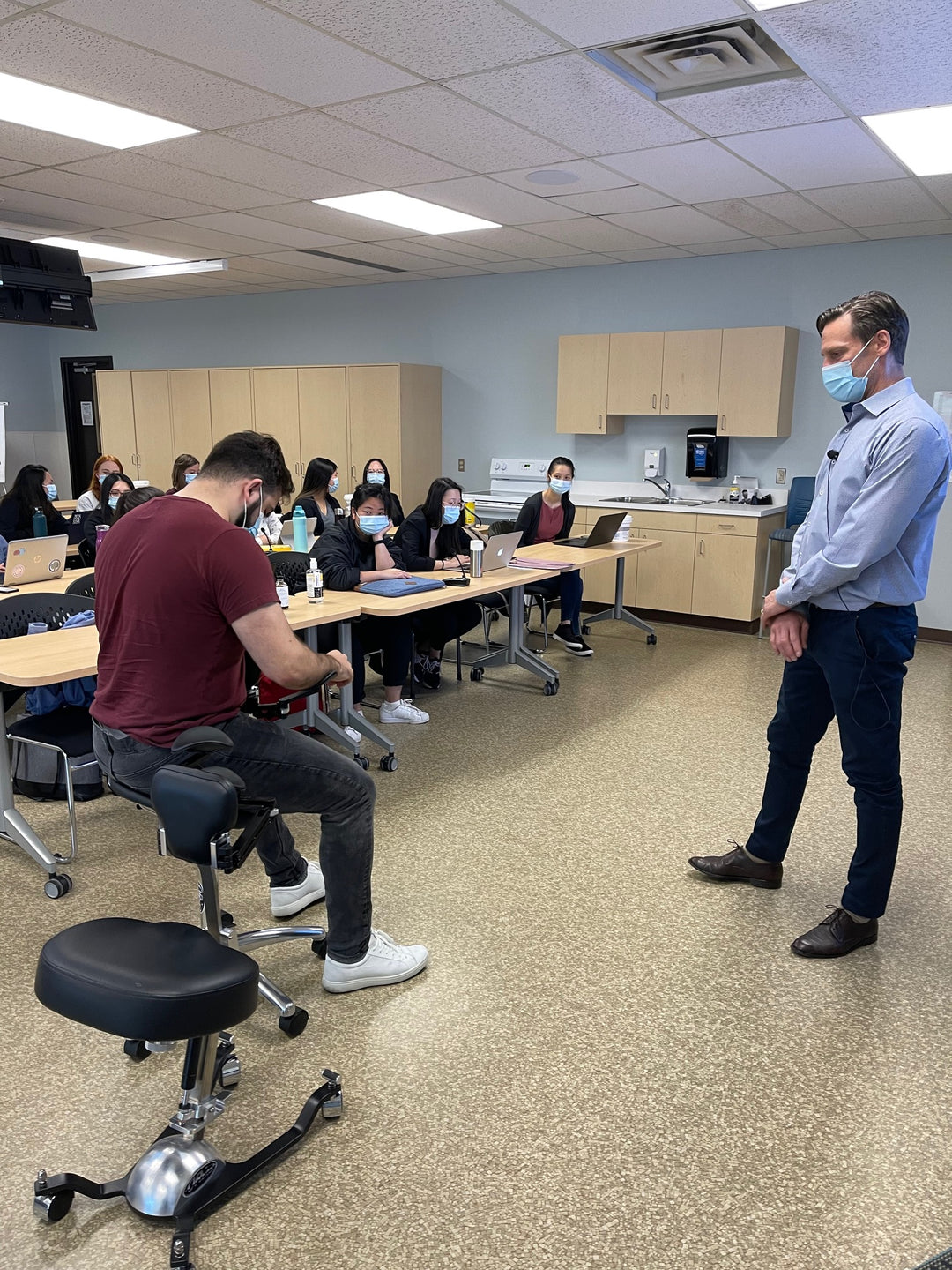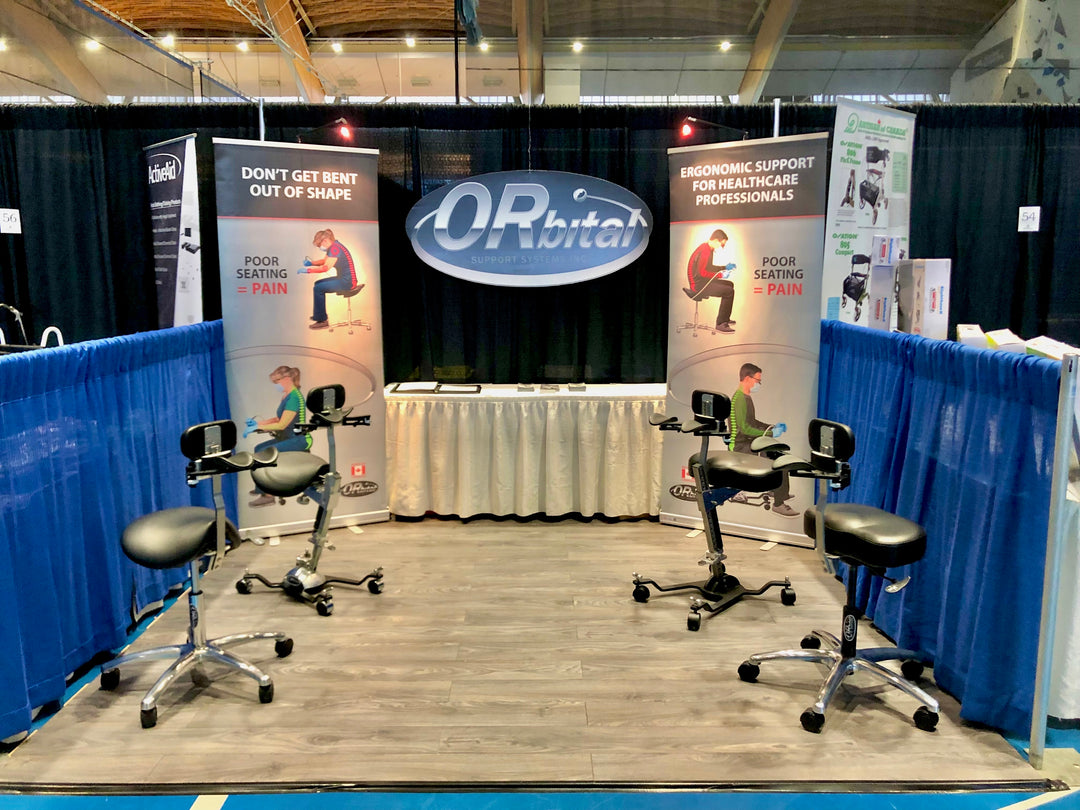Dental Hygienist Back, Neck, and Shoulder Pain

Introduction:
Most Dental Hygienists (RDH) suffer from back-related pain at some point in their careers. This is due to constantly being in awkward working positions for extended periods of time. Up until around 10 years ago, there was little to no education on maintaining ergonomic positioning and avoiding Musculoskeletal disorders for Hygienists. According to a study conducted by the International Journal of Dental Hygiene , many hygienists that were interviewed showed very little awareness of MSDs, leading to a lack of effort in prevention. RDH Magazine states that thousands of hygienists have developed “a wide range of physical disorders – and with injury rates that far surpass those of the general public” (RDH Magazine) and neck injuries are at the top of the list with 63%-89% of hygienists reporting neck injuries or discomfort. Additionally, the overall risk of developing one or more WRMSDs is high at 51% over the life of a clinical career.
These injuries can lead to more serious, life changing injuries causing an inability to work, mobility issues, early retirement, and can have an effect on mental health (link to last blog post).
What to Look out for
According to Safety and Health Magazine , some symptoms of MSDs include: pain, numbness, tingling, and weakness, usually due to injuries to muscles, tendons, nerves, joints, or ligaments. Some common examples include injuries to tendons at the wrist (DeQuervain’s disease), elbow (Tennis elbow), or shoulder (supraspinatus tendonitis); injuries to nerves in the neck, shoulder, elbow, or wrist (carpal tunnel syndrome or ulnar neuropathy); injuries to joints (arthritis); or chronic muscle pain (myalgias).
What to Do
Safety and Health Magazine states that “When performing dental hygiene work, a hygienist’s body posture should be neutral and his or her muscles should feel relaxed.” Some high-risk postures to avoid include the following:
- Sustained neck and back flexion (forward bending) and twisting
- Sustained shoulder elevation (shrugging), abduction, or flexion
- Sustained forceful pinching of instruments during debridement
With a busy schedule and many different patients, it can be easy to forget about ergonomic positioning, but taking the time to adjust the operator chair and the patient is imperative to maintaining good musculoskeletal health.
The Centers for Disease Control recommends fitting instruments, work spaces and tasks to an “employee’s physical capabilities and limitations” to provide for good ergonomics.
This includes a well-supported ergonomic chair, properly fitted magnification loupes, and educating yourself on how to maintain ergonomic positioning (Colgate).
Safety and Health Magazine’s positioning tips:
- The operator stool height should be adjusted so the operator’s knees are slightly lower than the hips and the feet are flat on the floor.
- The angle between the thighs and torso should be 90 degrees or more and the operator should be able to easily move around the patient chair.
- The operator should recline the patient and adjust the chair height to have good access to the oral cavity in all the clock positions around the patient’s head.
- The operator’s knees should be able to slide under the patient’s chair to avoid working with a twisted spine and torso.
- The operator should be able to work on the patient’s mouth with shoulders relaxed and elbows next to the torso.
- The height of the patient’s mouth should be close to elbow height.
- The operator should move to the appropriate clock position around the patient’s head, in order to achieve optimal access to the oral cavity
How Orbital Can Help
The Orbital 5S is an ideal solution for Dental Hygienists looking to maintain ergonomic positioning.
- The height is adjustable to allow the operator to keep their knees lower than the hips and feet flat on the floor.
- Seat – saddle seat or custom seat
- The saddle seat tilts your pelvis and helps to maintain neutral curvature of the spine. Great for higher working positions.
- Our custom seat (with double density foam) has a slight waterfall front edge and a forward build-up to keep you firmly seated. Great for lower working positions.
- The unique chest support offers biofeedback, reminding the operator to maintain ergonomic positioning at the 90 degree + angle. It keeps you perfectly aligned and prevents bending and twisting.
- The Orbital 5S offers a unique spring-loaded forward tilt feature. The seat and chest support move together thereby maintaining ergonomic positioning while improving access to the oral cavity.
- The fully adjustable armrests offer a full range of motion and support your upper body, relieving the muscle tension in your neck, shoulders, arms and back.
- This chair was designed specifically help Dental Professionals maintain ergonomic positioning
Learn more about Orbital’s Ergonomic Dental Stools Here.







